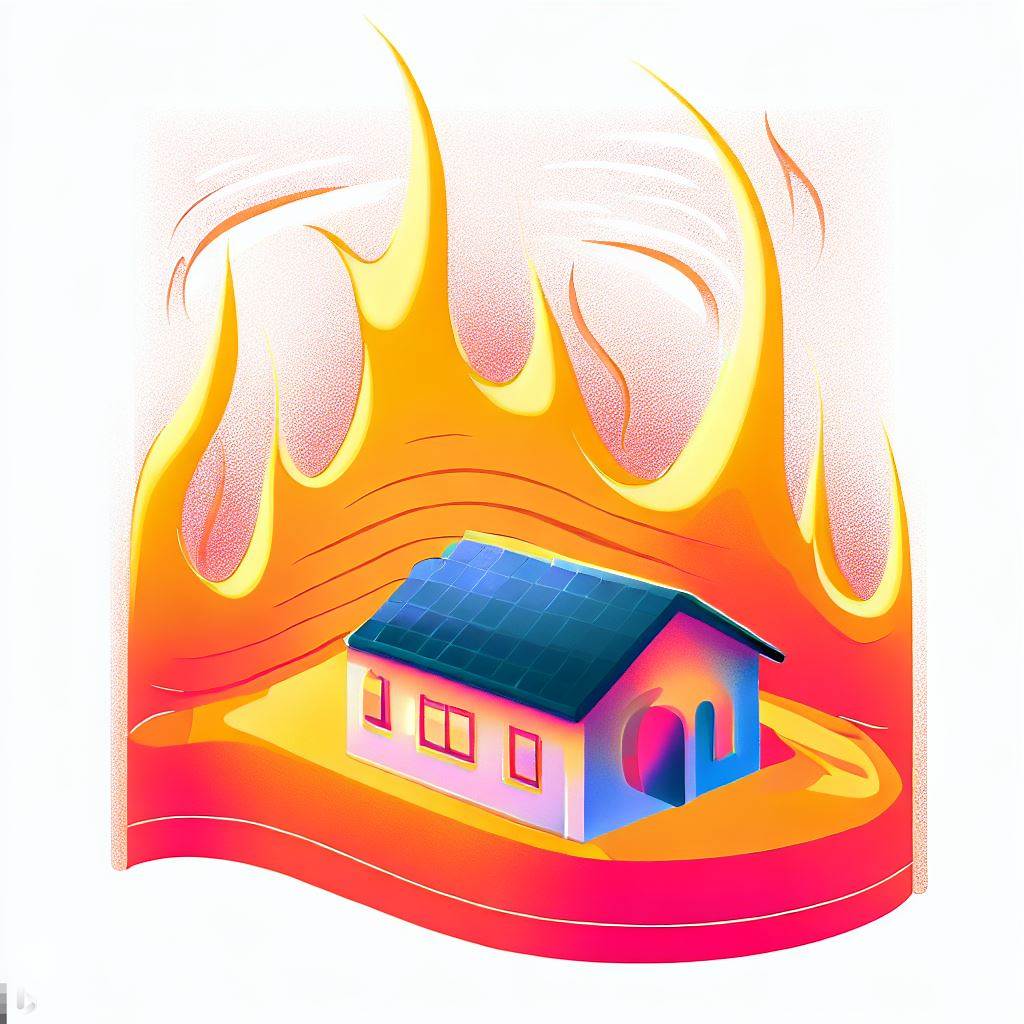With mounting concerns over climate change and rising energy costs, innovative solutions are required to reduce excessive heat’s impact and keep buildings cool. One such ground-breaking solution is heat reflective paint, which has been proven to reduce energy consumption and lower cooling bills.
With its ability to reflect sunlight and reduce heat absorption, heat reflective paint holds the potential to revolutionise energy efficiency in buildings, vehicles and industrial applications. This article will explore the benefits of heat reflective paint, its applications and the future of this technology.

How Heat Reflective Paint Works
Heat reflective paint, also known as solar reflective paint or cool roof paint, reflects heat to keep buildings cooler and is sold by most good roof tile paint suppliers. It is formulated with advanced materials that possess high reflectivity in the infrared (IR) spectrum. It works in a similar way to how light-coloured clothing keeps you cooler in summer by absorbing less heat.
Unlike conventional roof tile paints that absorb sunlight, heat reflective paint has unique properties that enable it to reflect a significant portion of solar radiation. This characteristic minimises heat transfer to the underlying surfaces, keeping them cooler and reducing the need for artificial cooling. One study found that using heat reflective coatings could reduce cooling loads by up to 93%.
Heat reflective paint consists of specialised pigments or coatings with high reflectance values across the solar spectrum, including infrared wavelengths. Infrared reflectance is particularly crucial as it prevents the absorption of heat by surfaces. This subsequently reduces heat transfer to the interior spaces.
Ceramic microspheres, typically made of hollow glass or ceramic, are used in heat reflective paint. They act as an insulating barrier within the paint, limiting heat conduction. Infrared-reflecting pigments, on the other hand, scatter and reflect infrared radiation, ensuring minimal heat absorption.
Benefits of Heat Reflective Paint
Heat reflective paint offers a multitude of benefits, making it an attractive solution for a range of products. The primary benefit of this paint is its ability to reduce energy consumption and reduce cooling bills. Reflecting sunlight away from the surface helps reduce heat transfer into a building, whether a commercial office, factory or residential home.
The reduced surface temperature minimises the use of air conditioning and cooling systems. This results in substantial energy savings, reduced carbon emissions, and lower utility bills. Not only are you helping to save the planet but saving money too.
Additionally, the reduction in external temperature creates a more pleasant indoor environment, particularly in hot climates such as Australia. This improved thermal comfort enhances productivity, reduces heat-related health risks, and promotes sustainable living.
Furthermore, heat reflective paint prolongs the lifespan of a painted surface. Excessive heat can cause expansion, contraction, and premature ageing of materials, leading to cracks, warping and other structural issues. The use of heat reflective paint helps mitigate these problems, preserving the integrity and longevity of the underlying surface.

Applications & Usage
Heat reflective paint is used in various sectors. It is utilised on rooftops, exterior walls, and facades in the construction industry to minimise heat absorption and reduce internal temperatures. Vehicle manufacturers are also adopting heat reflective methods to reduce the temperature of car interiors, improving comfort and reducing the need for air conditioning.
Moreover, heat reflective paint is used in industrial settings to coat machinery, pipelines, and storage tanks, preventing excessive heat build-up and safeguarding equipment. It can also be found in the aerospace sector, where it helps regulate temperatures in aircraft and spacecraft, ensuring optimal performance and safety.
How To Apply Heat Reflective Paint
Before applying heat reflective paint, it is essential to prepare the surface properly. This includes thoroughly cleaning the roof and gutters, removing all debris, disconnecting downpipes, and tightening all screws and nails.
The surface to be treated should be washed with water and, if required, bleaching powder. The paint should be stirred thoroughly before use. A primer–sealer paint should be applied first; we recommend Rustshield T Anti-Corrosive Metal Primer for steel/tin roofs and Shieldseal W for non-glazed tile roofs. Then apply two coats of heat reflective paint such as Thermobond HRC. All these paints can be found at any decent roof tile paint supplier.
Considerations & Limitations
While heat reflective paint offers numerous benefits, it may not be suitable for all climates. In colder regions, reflective paint could be a disadvantage, as it may reduce the amount of heat absorbed by a building and increase heating costs. Therefore, it is essential to consider the specific climate and energy needs of a building before deciding to use heat reflective paint.
The Future of Heat Reflective Paint
The heat-resistant coating market is steadily growing throughout Australia and other parts of the world. Innovations and advancements in technology are driving this growth. Start-ups and researchers are developing new building coatings that conserve energy by stabilising indoor temperatures.
With climate change being such a critical issue our planet faces, many strive to positively impact this field. As the demand for energy-efficient solutions continues to grow, heat reflective paint will likely play an increasingly important role in reducing energy consumption. It is one affordable way we can all contribute to keeping the planet greener.

The Bottom Line
Heat reflective paint presents an achievable solution to combat excessive heat, enhance energy efficiency, and reduce environmental impact. Its ability to reflect solar radiation and limit heat absorption offers numerous benefits, ranging from energy savings to improved comfort and durability.
As the world grapples with climate change and the need for sustainable practices, heat reflective paint emerges as a powerful tool in the pursuit of a greener and more energy-efficient future. By harnessing its potential across various sectors, we can create a world where buildings, vehicles, and industrial structures remain cooler while minimising their impact on the planet. With ongoing technological advancements and the growing market for heat-resistant coatings, the future of heat reflective paint looks promising. If you want to know more about heat-resistant coatings or buy some, try googling roof tile paint suppliers near me.
